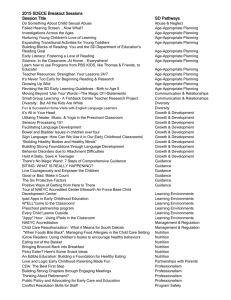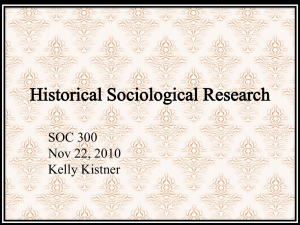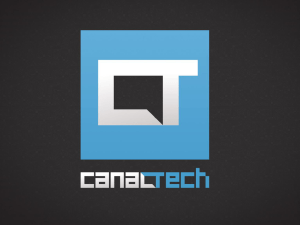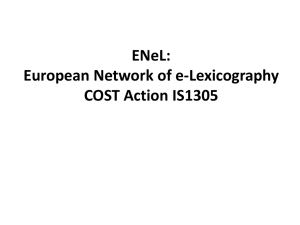Educational Technology Standards & Expectations Grades K-2
advertisement
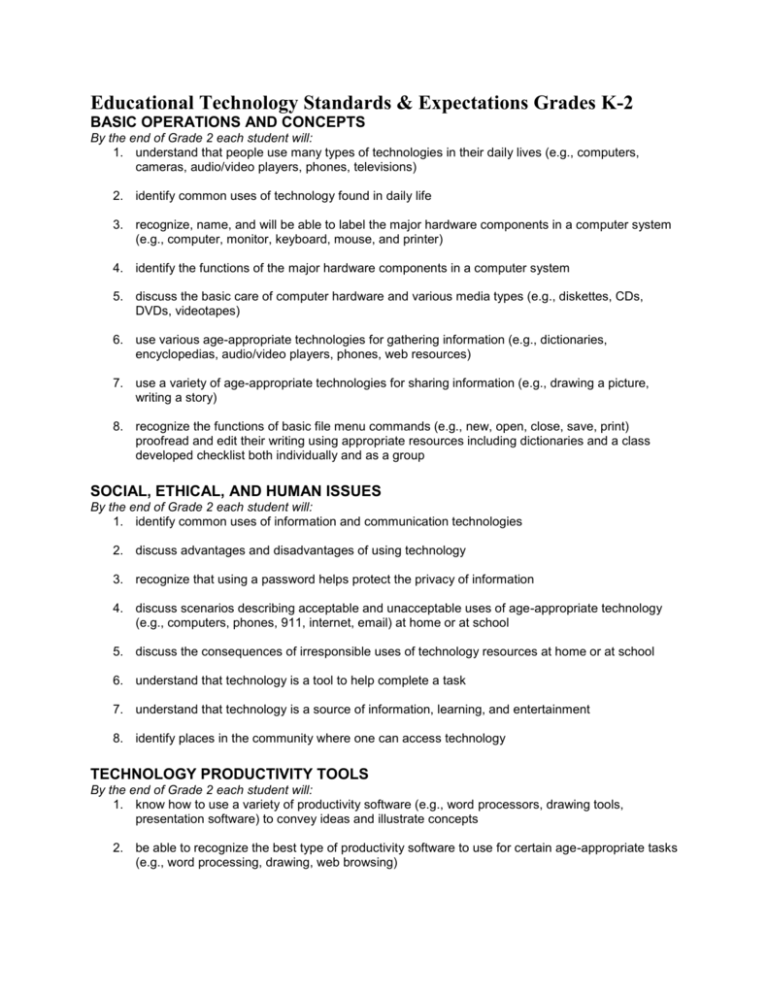
Educational Technology Standards & Expectations Grades K-2 BASIC OPERATIONS AND CONCEPTS By the end of Grade 2 each student will: 1. understand that people use many types of technologies in their daily lives (e.g., computers, cameras, audio/video players, phones, televisions) 2. identify common uses of technology found in daily life 3. recognize, name, and will be able to label the major hardware components in a computer system (e.g., computer, monitor, keyboard, mouse, and printer) 4. identify the functions of the major hardware components in a computer system 5. discuss the basic care of computer hardware and various media types (e.g., diskettes, CDs, DVDs, videotapes) 6. use various age-appropriate technologies for gathering information (e.g., dictionaries, encyclopedias, audio/video players, phones, web resources) 7. use a variety of age-appropriate technologies for sharing information (e.g., drawing a picture, writing a story) 8. recognize the functions of basic file menu commands (e.g., new, open, close, save, print) proofread and edit their writing using appropriate resources including dictionaries and a class developed checklist both individually and as a group SOCIAL, ETHICAL, AND HUMAN ISSUES By the end of Grade 2 each student will: 1. identify common uses of information and communication technologies 2. discuss advantages and disadvantages of using technology 3. recognize that using a password helps protect the privacy of information 4. discuss scenarios describing acceptable and unacceptable uses of age-appropriate technology (e.g., computers, phones, 911, internet, email) at home or at school 5. discuss the consequences of irresponsible uses of technology resources at home or at school 6. understand that technology is a tool to help complete a task 7. understand that technology is a source of information, learning, and entertainment 8. identify places in the community where one can access technology TECHNOLOGY PRODUCTIVITY TOOLS By the end of Grade 2 each student will: 1. know how to use a variety of productivity software (e.g., word processors, drawing tools, presentation software) to convey ideas and illustrate concepts 2. be able to recognize the best type of productivity software to use for certain age-appropriate tasks (e.g., word processing, drawing, web browsing) 3. be aware of how to work with others when using technology tools (e.g., word processors, drawing tools, presentation software) to convey ideas or illustrate simple concepts relating to a specified project TECHNOLOGY COMMUNICATIONS TOOLS By the end of Grade 2 each student will: 1. identify procedures for safely using basic telecommunication tools (e.g., e-mail, phones) with assistance from teachers, parents, or student partners 2. know how to use age-appropriate media (e.g., presentation software, newsletters, word processors) to communicate ideas to classmates, families, and others 3. know how to select media formats (e.g., text, graphics, photos, video), with assistance from teachers, parents, or student partners, to communicate and share ideas with classmates, families, and others TECHNOLOGY RESEARCH TOOLS By the end of Grade 2 each student will: 1. know how to recognize the Web browser and associate it with accessing resources on the internet 2. use a variety of technology resources (e.g., CD-ROMs, DVDs, search engines, websites) to locate or collect information relating to a specific curricular topic with assistance from teachers, parents, or student partners 3. interpret simple information from existing age-appropriate electronic databases (e.g., dictionaries, encyclopedias, spreadsheets) with assistance from teachers, parents, or student partners 4. provide a rationale for choosing one type of technology over another for completing a specific task TECHNOLOGY PROBLEM-SOLVING AND DECISION-MAKING TOOLS By the end of Grade 2 each student will: 1. discuss how to use technology resources (e.g., dictionaries, encyclopedias, search engines, websites) to solve age-appropriate problems 2. identify ways that technology has been used to address real-world problems (personal or community) Educational Technology Standards & Expectations Grades 3-5 BASIC OPERATIONS AND CONCEPTS By the end of Grade 5 each student will: 1. discuss ways technology has changed life at school and at home 2. discuss ways technology has changed business and government over the years 3. recognize and discuss the need for security applications (e.g., virus detection, spam defense, popup blockers, firewalls) to help protect information and to keep the system functioning properly 4. know how to use basic input/output devices and other peripherals (e.g., scanners, digital cameras, video projectors) 5. know proper keyboarding positions and touch-typing techniques 6. manage and maintain files on a hard drive or the network 7. demonstrate proper care in the use of hardware, software, peripherals, and storage media 8. know how to exchange files with other students using technology (e.g., e-mail attachments, network file sharing, diskettes, flash drives) 9. identify which types of software can be used most effectively for different types of data, for different information needs, or for conveying results to different audiences 10. identify search strategies for locating needed information on the internet 11. proofread and edit writing using appropriate resources (e.g., dictionary, spell check, grammar check, grammar references, writing references) and grade level appropriate checklists both individually and in groups SOCIAL, ETHICAL, AND HUMAN ISSUES By the end of Grade 5 each student will: 1. identify cultural and societal issues relating to technology 2. discuss how information and communication technology supports collaboration, productivity, and lifelong learning 3. discuss how various assistive technologies can benefit individuals with disabilities 4. discuss the accuracy, relevance, appropriateness, and bias of electronic information sources 5. discuss scenarios describing acceptable and unacceptable uses of technology (e.g., computers, digital cameras, cell phones, PDAs, wireless connectivity) and describe consequences of inappropriate use 6. discuss basic issues regarding appropriate and inappropriate uses of technology (e.g., copyright, privacy, file sharing, spam, viruses, plagiarism) and related laws 7. use age-appropriate citing of sources for electronic reports 8. identify appropriate kinds of information that should be shared in public chat rooms 9. identify safety precautions that should be taken while on-line 10. explore various technology resources that could assist in pursuing personal goals 11. identify technology resources and describe how those resources improve the ability to communicate, increase productivity, or help achieve personal goals TECHNOLOGY PRODUCTIVITY TOOLS By the end of Grade 5 each student will: 1. know how to use menu options in applications to print, format, add multimedia features; open, save, manage files; and use various grammar tools (e.g., dictionary, thesaurus, spell-checker) 2. know how to insert various objects (e.g., photos, graphics, sound, video) into word processing documents, presentations, or web documents 3. use a variety of technology tools and applications to promote creativity 4. understand that existing (and future) technologies are the result of human creativity 5. collaborate with classmates using a variety of technology tools to plan, organize, and create a group project TECHNOLOGY COMMUNICATIONS TOOLS By the end of Grade 5 each student will: 1. use basic telecommunication tools (e.g., e-mail, Web Quests, IM, blogs, chat rooms, web conferencing) for collaborative projects with other students 2. use a variety of media and formats to create and edit products (e.g., presentations, newsletters, brochures, web pages) to communicate information and ideas to various audiences 3. identify how different forms of media and formats may be used to share similar information, depending on the intended audience (e.g., presentations for classmates, newsletters for parents) TECHNOLOGY RESEARCH TOOLS By the end of Grade 5 each student will: 1. use Web search engines and built-in search functions of other various resources to locate information 2. describe basic guidelines for determining the validity of information accessed from various sources (e.g., web site, dictionary, on-line newspaper, CD-ROM) 3. know how to independently use existing databases (e.g., library catalogs, electronic dictionaries, encyclopedias) to locate, sort, and interpret information on an assigned topic 4. perform simple queries on existing databases and report results on an assigned topic 5. identify appropriate technology tools and resources by evaluating the accuracy, appropriateness, and bias of the resource 6. compare and contrast the functions and capabilities of the word processor, database, and spreadsheet for gathering data, processing data, performing calculations, and reporting results TECHNOLOGY PROBLEM-SOLVING AND DECISION-MAKING TOOLS By the end of Grade 5 each student will: 1. use technology resources to access information that can assist in making informed decisions about everyday matters (e.g., which movie to see, which product to purchase) 2. use information and communication technology tools (e.g., calculators, probes, videos, DVDs, educational software) 3. to collect, organize, and evaluate information to assist with solving real-life problems (personal or community) Educational Technology Standards & Expectations Grades 6-8 BASIC OPERATIONS AND CONCEPTS By the end of Grade 8 each student will: 1. use proper keyboarding posture, finger positions, and touch-typing techniques to improve accuracy, speed, and general efficiency in operating a computer 2. use appropriate technology terminology 3. use a variety of technology tools (e.g., dictionary, thesaurus, grammar-checker, calculator) to maximize the accuracy of technology-produced products 4. understand that new technology tools can be developed to do what could not be done without the use of technology 5. describe strategies for identifying and preventing routine hardware and software problems that may occur during everyday technology use 6. identify changes in hardware and software systems over time and discuss how these changes affected various groups (e.g., individual users, education, government, and businesses) 7. discuss common hardware and software difficulties and identify strategies for trouble-shooting and problem solving 8. identify characteristics that suggest that the computer system hardware or software might need to be upgraded 9. identify a variety of information storage devices (e.g., floppies, CDs, DVDs, fl ash drives, tapes) and 10. provide a rationale for using a certain device for a specific purpose 11. identify technology resources that assist with various consumer-related activities (e.g., budgets, purchases, banking transactions, product descriptions) 12. identify appropriate file formats for a variety of applications 13. use basic utility programs or built-in application functions to convert file formats 14. proofread and edit writing using appropriate resources (e.g., dictionary, spell check, grammar check, grammar references, writing references) and grade level appropriate checklists both individually and in groups SOCIAL, ETHICAL, AND HUMAN ISSUES By the end of Grade 8 each student will: 1. understand the potential risks and dangers associated with on-line communications 2. identify security issues related to e-commerce 3. discuss issues related to acceptable and responsible use of technology (e.g., privacy, security, copyright, plagiarism, spam, viruses, file-sharing) 4. describe possible consequences and costs related to unethical use of information and communication technologies 5. discuss the societal impact of technology in the future 6. provide accurate citations when referencing information from outside sources in electronic reports 7. use technology to identify and explore various occupations or careers 8. discuss possible uses of technology (present and future) to support personal pursuits and lifelong learning 9. identify uses of technology to support communication with peers, family, or school personnel TECHNOLOGY PRODUCTIVITY TOOLS By the end of Grade 8 each student will: 1. apply common software features (e.g., thesaurus, formulas, charts, graphics, sounds) to enhance communication and to support creativity 2. use a variety of technology resources, including the internet, to increase learning and productivity 3. explore basic applications that promote creativity (e.g., graphics, presentation, photo-editing, programming, video-editing) 4. use available utilities for editing pictures, images, or charts 5. use collaborative tools to design, develop, and enhance materials, publications, or presentations TECHNOLOGY COMMUNICATIONS TOOLS By the end of Grade 8 each student will: 1. use a variety of telecommunication tools (e.g., e-mail, discussion groups, IM, chat rooms, blogs, video conferences, web conferences) or other online resources to collaborate interactively with peers, experts, and other audiences 2. create a project (e.g., presentation, web page, newsletter, information brochure) using a variety of media and formats (e.g., graphs, charts, audio, graphics, video) to present content information to an audience TECHNOLOGY RESEARCH TOOLS By the end of Grade 8 each student will: 1. use a variety of Web search engines to locate information 2. evaluate information from various online resources for accuracy, bias, appropriateness, and comprehensiveness 3. identify types of internet sites based on their domain names (e.g., edu, com, org, gov, au) 4. know how to create and populate a database 5. perform queries on existing databases 6. know how to create and modify a simple database report 7. evaluate new technology tools and resources and determine the most appropriate tool to use for accomplishing a specific task TECHNOLOGY PROBLEM-SOLVING AND DECISION-MAKING TOOLS By the end of Grade 8 each student will: 1. use database or spreadsheet information to make predictions, develop strategies, and evaluate decisions to assist with solving a basic problem 2. describe the information and communication technology tools to use for collecting information from different sources, analyze findings, and draw conclusions for addressing real-world problems

